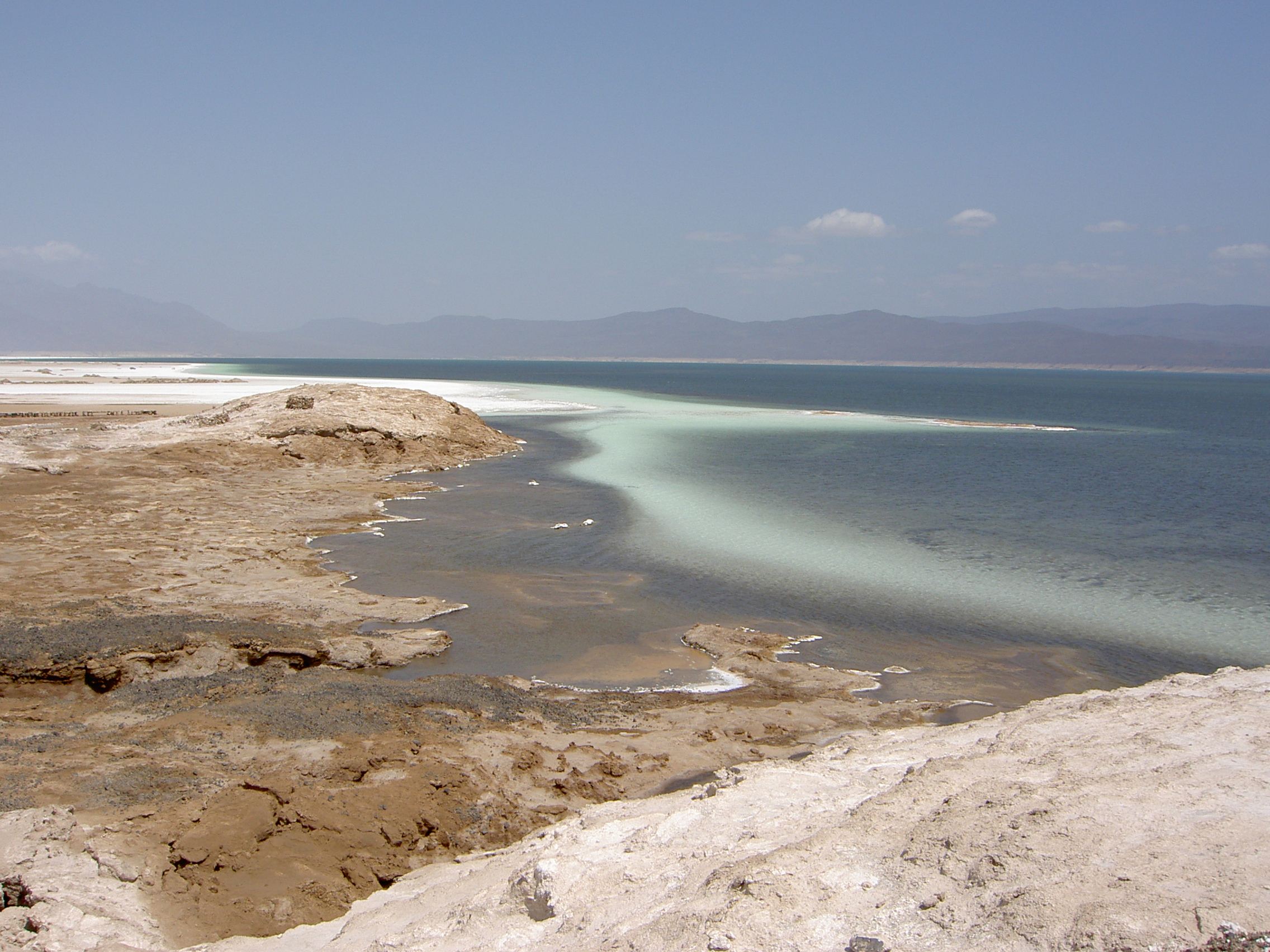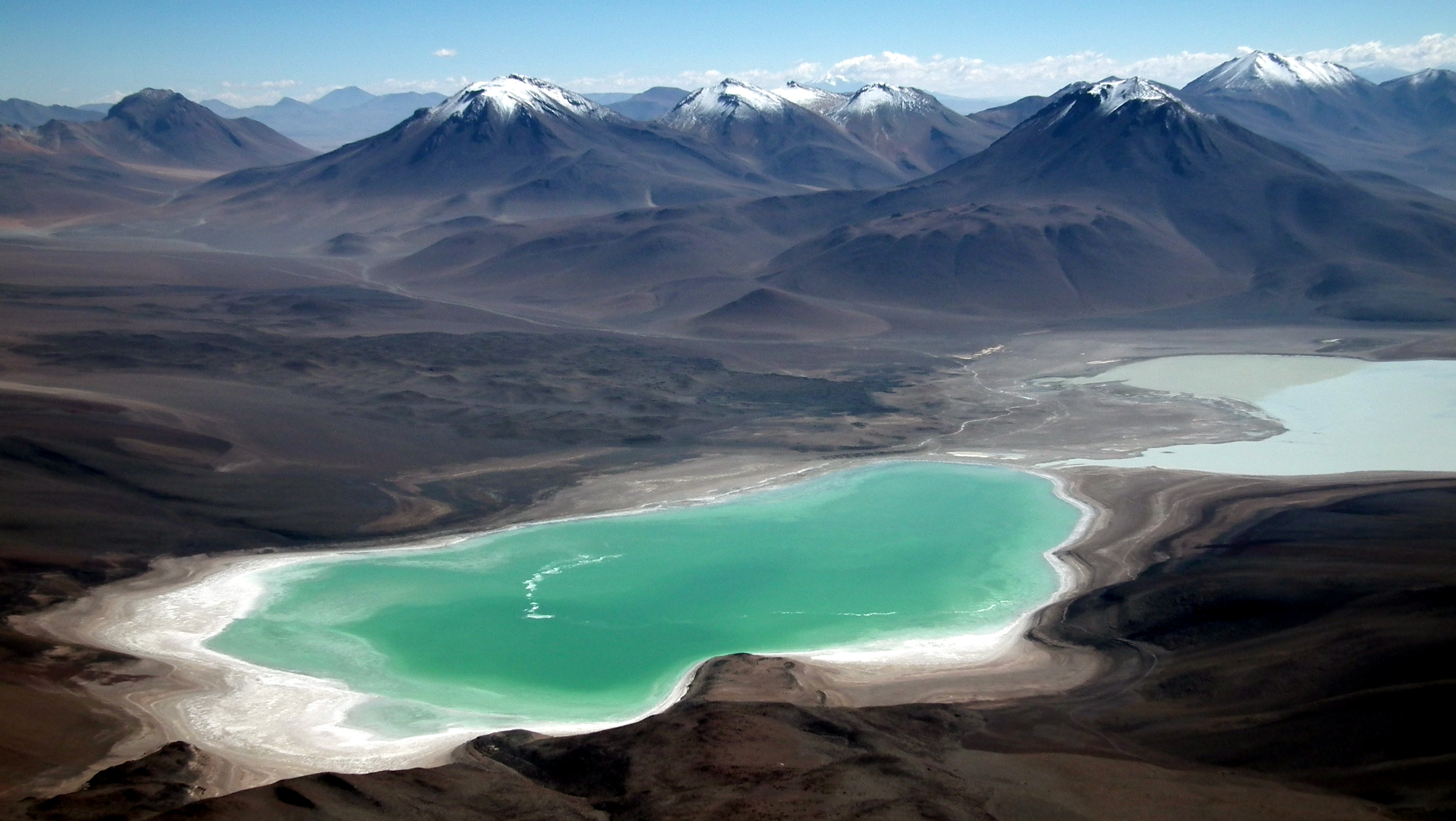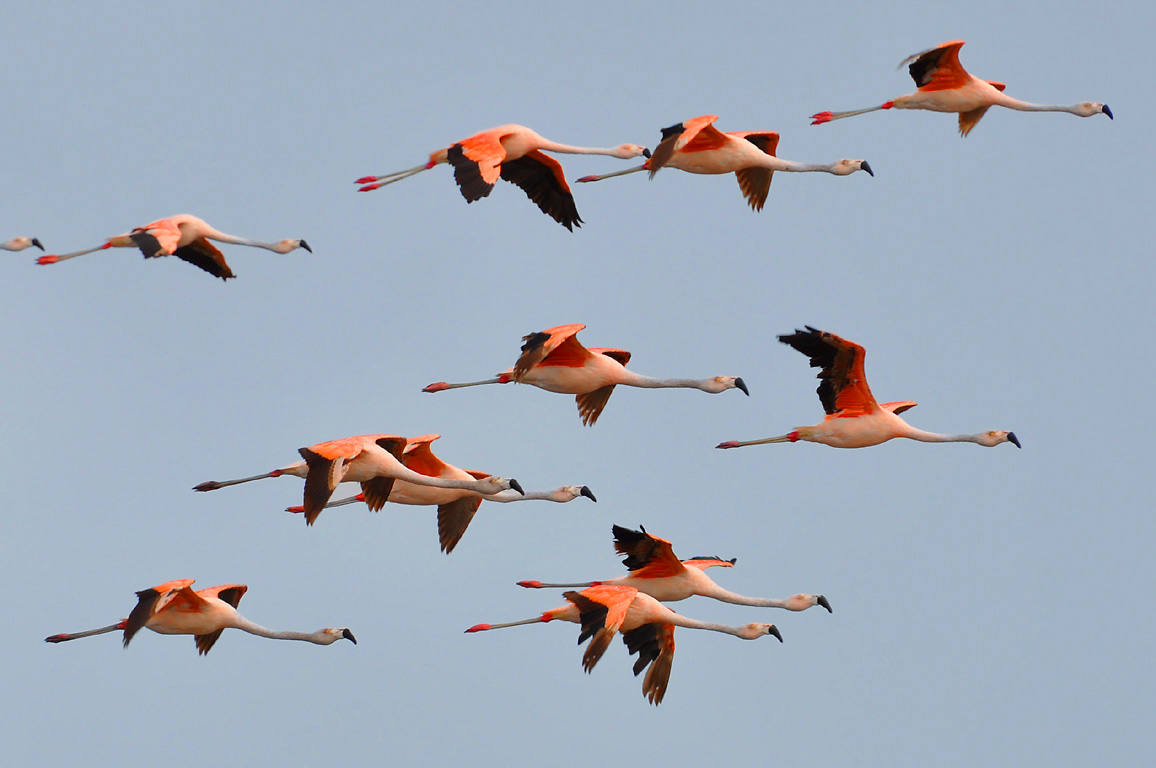|
Laguna Colorada
__NOTOC__ Laguna Colorada (''Red Lagoon'') is a shallow salt lake in the southwest of the altiplano of Bolivia, within Eduardo Avaroa Andean Fauna National Reserve and close to the border with Chile. Contents The lake contains borax islands, whose white color contrasts with the reddish color of its waters, which is caused by red sediments and pigmentation of some algae. Geography Laguna Colorada is part of the Los Lípez (formerly Laguna Colorada) Ramsar wetland The Ramsar Convention on Wetlands of International Importance Especially as Waterfowl Habitat is an international treaty for the conservation and sustainable use of Ramsar sites (wetlands). It is also known as the Convention on Wetlands. It i .... It was listed as a "Ramsar list of wetlands of international importance, Ramsar Wetland of International Importance" in 1990. On, July 13, 2009, the site was expanded from 513.18 to to include the surrounding high Andean endorheic, hypersaline and brackish lakes and ... [...More Info...] [...Related Items...] OR: [Wikipedia] [Google] [Baidu] |
Potosí Department
Potosí (; Aymara: ''Putusi''; qu, P'utuqsi) is a department in southwestern Bolivia. It comprises 118,218 km2 with 823,517 inhabitants (2012 census). The capital is the city of Potosí. It is mostly a barren, mountainous region with one large plateau to the west, where the largest salt flat in the world, Salar de Uyuni, is located. Cerro Potosí was the richest province in the Spanish empire, providing a great percentage of the silver that was shipped to Europe. Potosi is also the location of the San Cristóbal silver, zinc and lead mines, developed by the US-company Apex Silver Mines Limited of Colorado and in November 2008 sold to the Japanese Sumitomo Corporation. Government The chief executive office of Bolivia departments (since May 2010) is the governor; until then, the office was called the prefect, and until 2006 the prefect was appointed by the President of Bolivia. The current governor, Esteban Urquizu Cuéllar of the Movement for Socialism – Politica ... [...More Info...] [...Related Items...] OR: [Wikipedia] [Google] [Baidu] |
Hypersaline
A hypersaline lake is a landlocked body of water that contains significant concentrations of sodium chloride, brines, and other salts, with saline levels surpassing that of ocean water (3.5%, i.e. ). Specific microbial species can thrive in high-salinity environments that are inhospitable to most lifeforms, including some that are thought to contribute to the colour of pink lakes. Some of these species enter a dormant state when desiccated, and some species are thought to survive for over 250 million years. The water of hypersaline lakes has great buoyancy due to its high salt content. Hypersaline lakes are found on every continent, especially in arid or semi-arid regions. In the Arctic, the Canadian Devon Ice Cap contains two subglacial lakes that are hypersaline. In Antarctica, there are larger hypersaline water bodies, lakes in the McMurdo Dry Valleys such as Lake Vanda with salinity of over 35% (i.e. 10 times as salty as ocean water). The most saline water body in th ... [...More Info...] [...Related Items...] OR: [Wikipedia] [Google] [Baidu] |
Lakes Of Potosí Department
A lake is an area filled with water, localized in a basin, surrounded by land, and distinct from any river or other outlet that serves to feed or drain the lake. Lakes lie on land and are not part of the ocean, although, like the much larger oceans, they do form part of the Earth's water cycle. Lakes are distinct from lagoons, which are generally coastal parts of the ocean. Lakes are typically larger and deeper than ponds, which also lie on land, though there are no official or scientific definitions. Lakes can be contrasted with rivers or streams, which usually flow in a channel on land. Most lakes are fed and drained by rivers and streams. Natural lakes are generally found in mountainous areas, rift zones, and areas with ongoing glaciation. Other lakes are found in endorheic basins or along the courses of mature rivers, where a river channel has widened into a basin. Some parts of the world have many lakes formed by the chaotic drainage patterns left over from the ... [...More Info...] [...Related Items...] OR: [Wikipedia] [Google] [Baidu] |
Mount Nelly
Nelly ( Spanish ''Cerro Nelly'') is a stratovolcano in the Andes located in the Cordillera Occidental of Bolivia, about 5,676 m (18,622 ft) high. It is situated within the Eduardo Avaroa Andean Fauna National Reserve, north east of the Licancabur volcano, Laguna Verde and Laguna Blanca and next to Mount Laguna Verde in the Potosí Department, Sur Lípez Province, San Pablo de Lípez Municipality, Quetena Grande Canton. See also * *[...More Info...] [...Related Items...] OR: [Wikipedia] [Google] [Baidu] |
Laguna Verde (Bolivia)
__NOTOC__ Laguna Verde (Spanish for "green lake") is a salt lake in an endorheic basin, in the southwestern Altiplano in Bolivia. It is located in the Sur Lípez Province of the Potosí Department. It is close to the Chilean border, at the foot of the volcano Licancabur. Geography The Laguna Verde is a lake at elevation. It covers an area of and has a depth of , and a narrow causeway divides it into two parts. It is at the southwestern extremity of the Eduardo Avaroa Andean Fauna National Reserve and Bolivia itself. It has mineral suspensions of arsenic and other minerals which renders colour to the lake waters. Its color varies from turquoise to dark emerald depending on the disturbance caused to sediments in the lake by winds. In the backdrop of the lake there is the inactive volcano Licancabur of in elevation, which is a nearly perfect cone. The shorelines west and east of the lake have different characteristics, with the western and southern shores eroded into volcanoes ... [...More Info...] [...Related Items...] OR: [Wikipedia] [Google] [Baidu] |
Lama Glama Laguna Colorada 2
Lama (; "chief") is a title for a teacher of the Dharma in Tibetan Buddhism. The name is similar to the Sanskrit term ''guru'', meaning "heavy one", endowed with qualities the student will eventually embody. The Tibetan word "lama" means "highest principle", and less literally "highest mother" or "highest parent" to show close relationship between teacher and student."lama" from Historically, the term was used for venerated spiritual masters or heads of . Today the title can be used as an [...More Info...] [...Related Items...] OR: [Wikipedia] [Google] [Baidu] |
Chilean Flamingo
The Chilean flamingo (''Phoenicopterus chilensis'') is a species of large flamingo at closely related to the American flamingo and the greater flamingo, with which it was sometimes considered conspecific. The species is listed as near threatened by the IUCN. It breeds in South America from Ecuador and Peru to Chile and Argentina and east to Brazil; it has been introduced into the Netherlands. Like all flamingos, it lays a single chalky-white egg on a mud mound. These flamingos are mainly restricted to salt lagoons and soda lakes but these areas are vulnerable to habitat loss and water pollution. Description The plumage is pinker than the slightly larger greater flamingo, but less so than the Caribbean flamingo. It can be differentiated from these species by its grayish legs with pink joints ( tibiotarsal articulation), and also by the larger amount of black on the bill (more than half). Young chicks may have no sign of pink coloring whatsoever, but instead remain gray or ... [...More Info...] [...Related Items...] OR: [Wikipedia] [Google] [Baidu] |
Andean Flamingo
The Andean flamingo (''Phoenicoparrus andinus'') is a species of flamingo native to the Andes mountains of South America. Until 2014, it was classified in genus ''Phoenicopterus''. It is closely related to James's flamingo, and the two make up the genus ''Phoenicoparrus''. The Chilean flamingo, Andean flamingo, and James' flamingo are all sympatric, and all live in colonies (including shared nesting areas).Mascitti, V. and Kravetz, F.O., "Bill Morphology of South American Flamingos". ''The Condor''. 104(1), 73. Description It is distinguished from other flamingos by its deeper lower mandible and the very long filtering filaments on the maxilla. It is the largest flamingo in the Andes and is one of the two heaviest living flamingos alongside the taller greater flamingo. Reportedly body mass of the Andean flamingo has ranged from , height from and wingspan from . The flamingo has a pale pink body with brighter upperparts, deep vinaceous-pink lower neck, breast, and wing coverts. ... [...More Info...] [...Related Items...] OR: [Wikipedia] [Google] [Baidu] |
James's Flamingo
James's flamingo (''Phoenicoparrus jamesi''), also known as the puna flamingo, is a species of flamingo that lives at high altitudes in the Andean plateaus of Peru, Chile, Bolivia, and northwest Argentina. It is named for Harry Berkeley James, a British naturalist who studied the bird. James's flamingo is closely related to the Andean flamingo, and the two species are the only members of the genus ''Phoenicoparrus''. The Chilean flamingo, Andean flamingo, and James's flamingo are all sympatric, and all live in colonies (including shared nesting areas).Mascitti, V. and Kravetz, F.O., "Bill Morphology of South American Flamingos". ''The Condor''. 104(1), 73. James's flamingo had been thought to be extinct until a population was discovered in a remote area in 1956.Johnson, A.W., Behn, F., and Millie, W.R. "The South American Flamingos". ''The Condor''. 60(5), 289-99 Description The James's flamingo is smaller than the Andean flamingo, and is about the same size as the Old World s ... [...More Info...] [...Related Items...] OR: [Wikipedia] [Google] [Baidu] |
Bofedales
Bofedales (singular ''bofedal''), known in some parts of Peru as ''oconales'', are a type of wetland found in the Andes in Peru and Chile. They are a feature in the land use and ecology of high Andean ecosystems. They form in flat areas around ponds or streams and may be permanent or seasonal, and they can be man made or natural. The soil in a bofedal will be moist throughout the year. Bofedales are associated with peat in the soil and the presence of humidity in the soil means that they are green throughout the year. Bofedales are found above above sea level (asl), although some classifications put them no lower than asl. The Ramsar Convention describes bofedales as peatlands without forest. Bofedales absorb the limited amount of water derived from snow, glacier meltwater and rain showers storing it in ground and slowly releasing it. The water can be either fresh or saline. Their vegetation is slow-growing and tough, made up of grasses, especially rushes, and some low spreading ... [...More Info...] [...Related Items...] OR: [Wikipedia] [Google] [Baidu] |
Brackish
Brackish water, sometimes termed brack water, is water occurring in a natural environment that has more salinity than freshwater, but not as much as seawater. It may result from mixing seawater (salt water) and fresh water together, as in estuaries, or it may occur in brackish fossil aquifers. The word comes from the Middle Dutch root '' brak''. Certain human activities can produce brackish water, in particular civil engineering projects such as dikes and the flooding of coastal marshland to produce brackish water pools for freshwater prawn farming. Brackish water is also the primary waste product of the salinity gradient power process. Because brackish water is hostile to the growth of most terrestrial plant species, without appropriate management it is damaging to the environment (see article on shrimp farms). Technically, brackish water contains between 0.5 and 30 grams of salt per litre—more often expressed as 0.5 to 30 parts per thousand (‰), which is a spec ... [...More Info...] [...Related Items...] OR: [Wikipedia] [Google] [Baidu] |







_06.jpg)

.jpg)